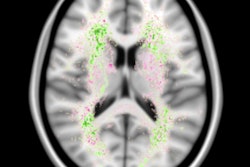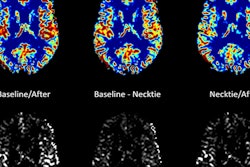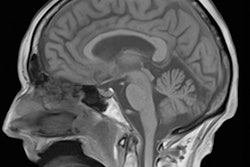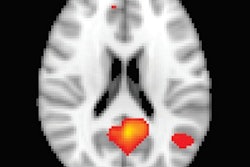
VIENNA - Detailed brain maps compiled from voxel-based morphometry of brain MR images can yield new insights into human cognition, including evidence that the hippocampus has an important role in executive function, according to a Saturday morning presentation at ECR 2017.
A Dutch research team used voxel-based morphometry analysis of MR images and cognitive tests on nearly 4,000 patients and found several positive and negative associations between gray-matter density and cognitive functioning. They also determined that the hippocampus -- known as the most important brain structure for memory -- was important in executive functioning.
"Detailed brain maps provide further insight into biology because signals are now localized to specific parts of the brain," said presenter Hazel Zonneveld of Erasmus Medical Center in Rotterdam, the Netherlands. "We found both positive and negative associations [between gray-matter density and cognitive function]."
Human cognition
Comprising a variety of domains such as memory, fine motor speed, executive function, and information processing speed, human cognition varies between individuals and throughout life, according to Zonneveld. Cognition is determined by both genetic and environmental factors that are reflected in the brain.
The researchers thought it would be interesting to investigate the neural substrate of cognition to explore the biology between brain structure and function and because it would offer insight into diseases such as Alzheimer's, she said. Brain imaging allows for the study of brain structure and cognition using two approaches: a hypothesis-driven approach and aggregate measures.
"We think the brain is more complex and we are losing information with these aggregate measures; we [also] know that there is functional specialization within such regions," she said. "[However,] hypothesis-free and fine-grained approaches that study the brain at highest resolution, i.e., the voxel, are lacking and underpowered."
As a result, the researchers sought to use voxel-based morphometry to investigate the neural substrate of cognitive function in middle-aged and elderly subjects. They utilized data from the Rotterdam Study, a prospective population-based cohort study of the causes and consequences of age-related disease. The study has run since 1990 and includes 14,926 participants ages 45 and older.
Between 2009 and 2014, 4,140 participants received brain MRI and cognitive testing. Of these, 327 were excluded for factors such as prevalent dementia, insufficient cognitive screening, cortical infarcts, and clinical stroke. The remaining 3,813 subjects had a mean age of 69.1 years, and 55.8% were women.
All MR images were acquired on a 1.5-tesla scanner. The participants also received a battery of cognitive tests, including one with a letter-digit substitution task; a word fluency test; Stroop tests for reading, naming, and interference; a 15-word learning test -- both immediate and delayed; and the Purdue Pegboard Test.
The team performed tissue segmentation on the MR images using software that was developed in house. Next, they performed voxel-based morphometry to calculate local gray-matter density. To explore the association between local gray-matter density and cognitive function, the researchers used linear regression models with voxel values of gray-matter density as the dependent variable; age, sex, education level, and cognitive function were used as independent variables.
Zonneveld and colleagues found 8,806 significant associations at a minimal p-value of 1.4 x 10-11 and more than 48 clusters with a size between 1 and 1,129 voxels. The associations were found across various subcortical and cortical structures, according to Zonneveld.
Hippocampus
The hippocampus is known as the most important structure in the brain for memory, but the researchers also found strong associations in the hippocampus for executive function.
| Positive associations with gray-matter density and cognitive function for the hippocampus | ||
| Cognitive domain | No. of positive voxels | Minimum p-value |
| Memory | 1,277 | 4.84 x 10-10 |
| Executive functioning | 60 | 1.37 x 10-9 |
Interestingly, there were also some negative associations between gray-matter density and cognitive function, she said.
| Negative associations between gray-matter density and fine-motor speed | ||
| Structure | No. of negative voxels | Minimum p-value |
| Lingual gyrus | 255 | 8.33 x 10-09 |
| Cingulate cortex | 839 | 1.4 x 10-11 |
The researchers found associations in the cortex with all cognitive domains, both in overlapping as well as in domain-specific regions. Zonneveld noted that future studies are now needed to explore the longitudinal assessment of cognitive decline.
"We would also need to disentangle development and atrophy," she said.



















